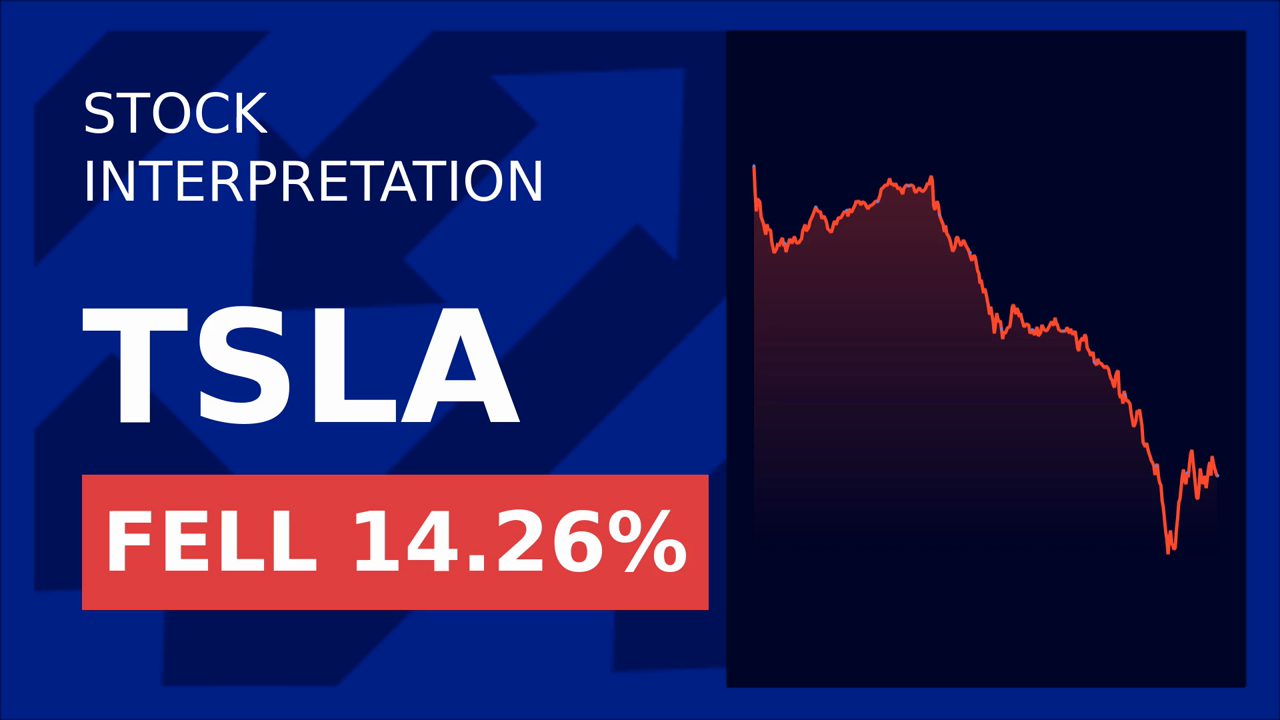Tesla Stock Marks 5 Straight Days of Losses. Where It Could Be Headed Next.
Friday, Feb 28, 2025 1:27 am ET
Tesla (TSLA) investors have been on a rollercoaster ride lately, with the stock experiencing a five-day losing streak. As of February 28, 2025, Tesla's share price has plummeted by nearly 30% in just one month, raising concerns about the company's future prospects. But is this a sign of things to come, or is it an opportunity for investors to buy the dip? Let's dive into the factors contributing to Tesla's recent stock price decline and explore where the stock could be headed next.

First, let's address the elephant in the room: Tesla's recent stock price decline can be attributed to several primary factors. One of the most significant contributors is the short-term fundamental issues the company has been facing, such as production delays, quality issues, and regulatory hurdles. For instance, in 2024, Tesla's production of the Cybertruck was delayed, and it faced regulatory issues with its Autopilot system (CNN, 2025). These issues have negatively impacted Tesla's stock price and eroded investor confidence.
Another factor contributing to Tesla's stock price decline is the hype surrounding artificial intelligence (AI) and the high-interest rate environment. Investors have been focusing more on AI-related stocks, leading to a shift in investment priorities. Additionally, the high-interest rate environment has made it more expensive for companies to borrow money, which can negatively impact their stock prices (CNN, 2025).
JNPR, MSFT, GOOGL, AMZN, TSLA...Percentage Change
To understand how Tesla's stock price decline compares to broader market trends, we can look at its performance against the S&P500 and its Magnificent 7 peers. Over the last 12 months, Tesla's stock has underperformed against these benchmarks. This indicates that Tesla's stock price decline is not solely due to broader market trends but is also influenced by company-specific factors (CNN, 2025).
Now, let's explore the competitive landscape and its potential impact on Tesla's future growth prospects. The competitive landscape has evolved significantly over the years, with both traditional automakers and new EV startups entering the market. Established car manufacturers like General Motors (GM) and Ford Motor (F) have been ramping up their EV offerings, while Chinese EV makers like BYD, NIO, and Xpeng have been gaining traction in the Chinese market and expanding globally. New EV startups like Rivian, Lucid, and Polestar have also emerged as strong competitors in the premium EV segment.
The evolving competitive landscape could impact Tesla's future growth prospects in several ways. Increased competition for market share, particularly in the premium and mass-market segments, could lead to technological arms races and regulatory pressure. To maintain growth, Tesla may need to expand into new markets and adapt its products to meet local preferences and regulations, requiring significant investment in research, development, and manufacturing.
Despite these challenges, Tesla's future growth prospects remain strong due to its first-mover advantage, strong brand recognition, and innovative product offerings. The company's ability to adapt to the evolving competitive landscape and continue innovating will be crucial to its long-term success.
In conclusion, Tesla's recent stock price decline can be attributed to short-term fundamental issues, AI hype, and a high-interest rate environment. While broader market trends may have played a role, Tesla's underperformance against the S&P500 and its Magnificent 7 peers suggests that company-specific factors are also at play. The evolving competitive landscape could impact Tesla's future growth prospects, but the company's strong brand recognition and innovative product offerings position it well for long-term success. As an investor, it's essential to stay informed about these factors and make strategic decisions based on the latest information.


_442a2dcc1749832873286.jpeg)
_e68fac6d1749831664430.jpeg)






